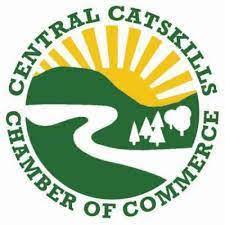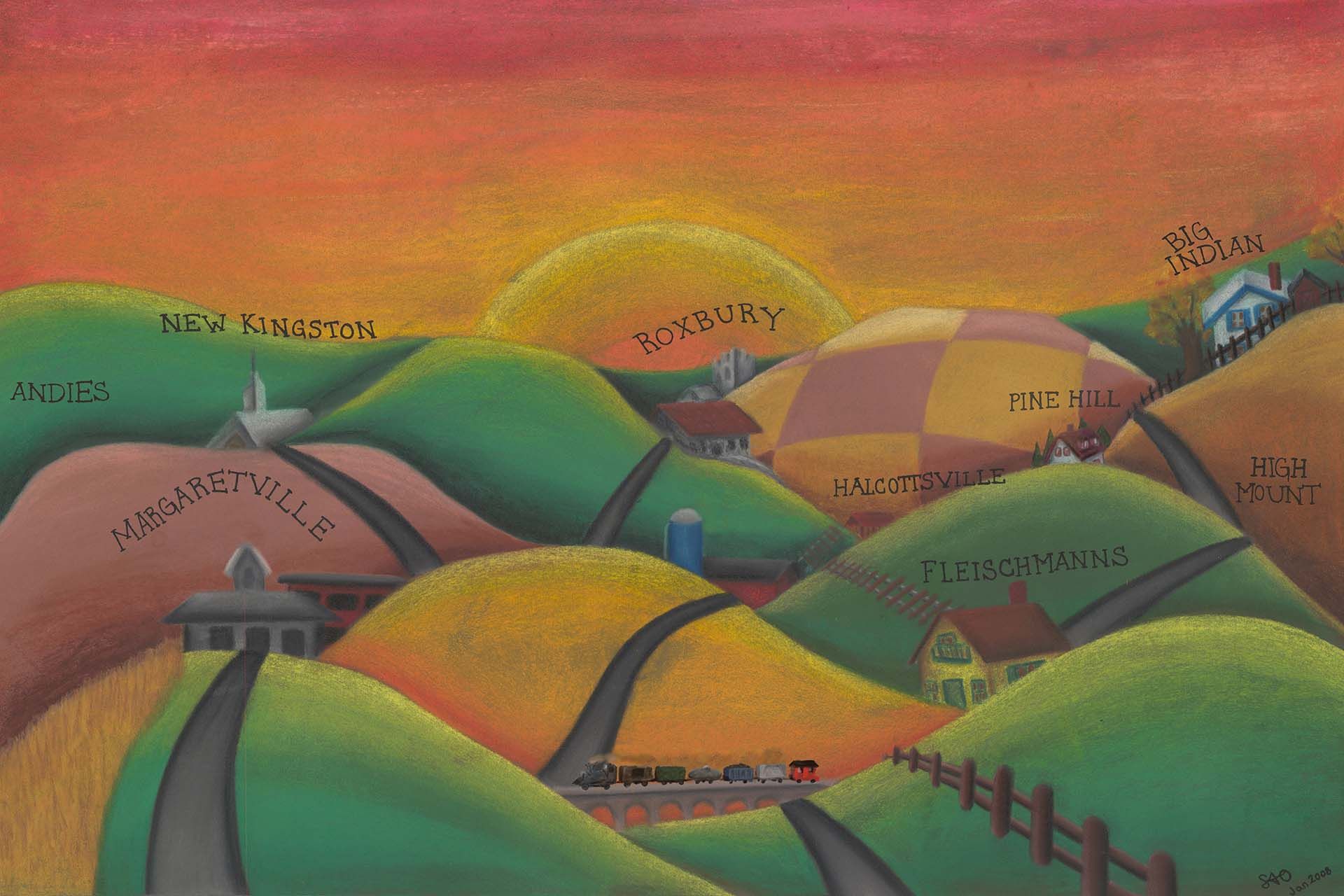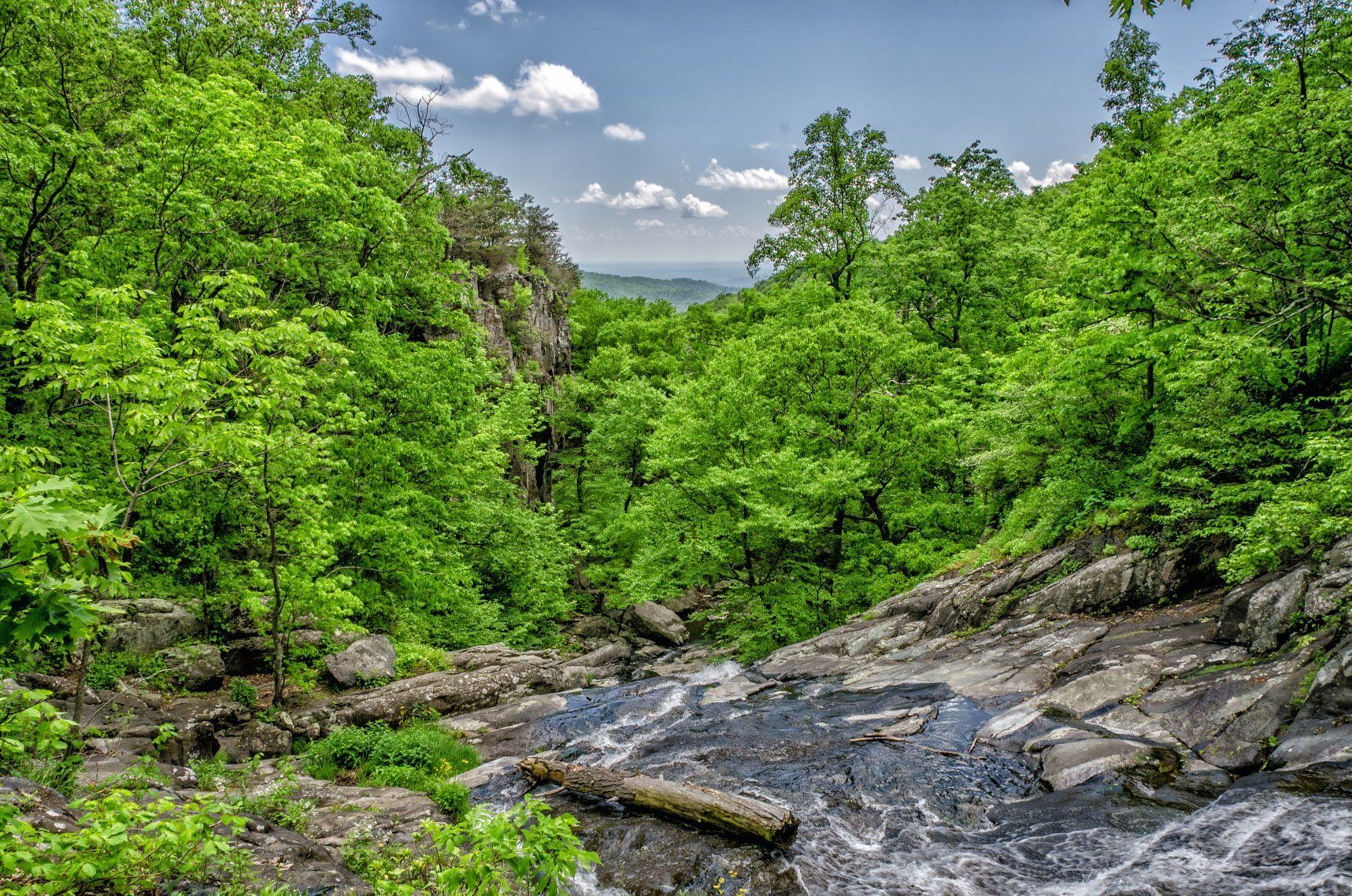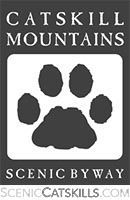History of Fleischmanns, New York
The Village of Fleischmanns was created in 1913, consolidating what had been two separate areas. Dating back to at least the 1830’s, the hamlet of Griffin’s Corners grew on what is now the east end of the Village. It was named after Matthew Griffin, an early settler and quite the jack-of-all-trades. He was first Postmaster here, was a lawyer, ran a hotel and store, and even served in the State Assembly. The Griffin’s Corners Post Office opened in 1851.
In the 1870’s, a railroad up from Kingston was built, eventually known as the Ulster & Delaware Railroad. It suddenly opened up the area to visitors from New York City, and from much farther away. A trip that had taken many difficult hours (or days) on the rough roads suddenly became a matter of hours. Local farmers quickly found that they could make money hosting summer visitors trying to escape from the heat in pre-air conditioning NY. A number of large and medium sized hotels and guest houses were built. Most impressive of all, the wealthy Fleischmann family (of yeast fame and fortune) purchased land above the Railroad, overlooking Griffin’s Corners, where they built a family compound with five mansions and many out-buildings. (Picture a 19th Century version of the Kennedy Compound at Hyannis.) This encouraged many others from NYC to build their own summer homes, and for many decades the area around Fleischmanns absolutely boomed in the summers. By 1888 there was a separate Fleischmanns Post Office, serving the booming business at the west end of town; Bridge Street was the dividing line between the two areas.
In 1906, work began on a dam just north of the Village center, which by 1907 created Lake Switzerland. A number of large hotels were quickly built there. The Regis Hotel still stands, although the lake itself is gone now. But for many years, the lake was the focus for recreation. A noted American painter, Paul Sawyier, spent the last years of his life here in the 1910’s, and painted many bright scenes of boats on the lake, and the lively village. In the winter, ice was harvested from the lake to provide cold storage in pre-refrigeration days--almost every home and hotel had an ice house.
Many hotels of all sizes existed to serve the early, busy tourism industry here. Overlooking Fleischmanns, straddling the Ulster/Delaware County line, was the fabled Grand Hotel. One of the largest hotels in the Catskills, it drew throngs for many decades. Smaller hotels grew in every nook and corner of the Village, and many private homes took in a few boarders. Another survivor from that era is the Palace Hotel on Wagner Avenue.
When the Fleischmann family left the area for good in 1913, they donated their park property on Wagner Avenue, where baseball and other summer pastimes entertained throngs of visitors to the Village. Some reports state that the stands at the Mountain Athletic Club field could hold 5000 people, In grateful recognition, the expanded Village renamed itself Fleischmanns in their honor. Post card images and photos from that period show huge crowds on the streets in the summer; many in quite fancy dress, even with parasols. World War One brought some decline, and then, as patterns of travel and tourism changed, the number of visitors grew less and less each year. There was some resurgence after World War Two, and people today will reminisce about how crowded the streets were then. The advent of the automobile brought about a new style of vacationing; motor courts, later motels, replaced the earlier hotels. And there has been a huge increase in the number of second-home owners. Part of this is due to the growth of the ski industry in the area—offering new economic benefits and making Fleischmanns into a year-round vacation destination. Fleischmanns is still graced with many of the virtues that have been bringing visitors up since the 1870’s, and the Village is continually being rediscovered by subsequent generations of residents and visitors.
Offered by The Greater Fleischmanns Museum of Memories
www.fleischmannsny.com








